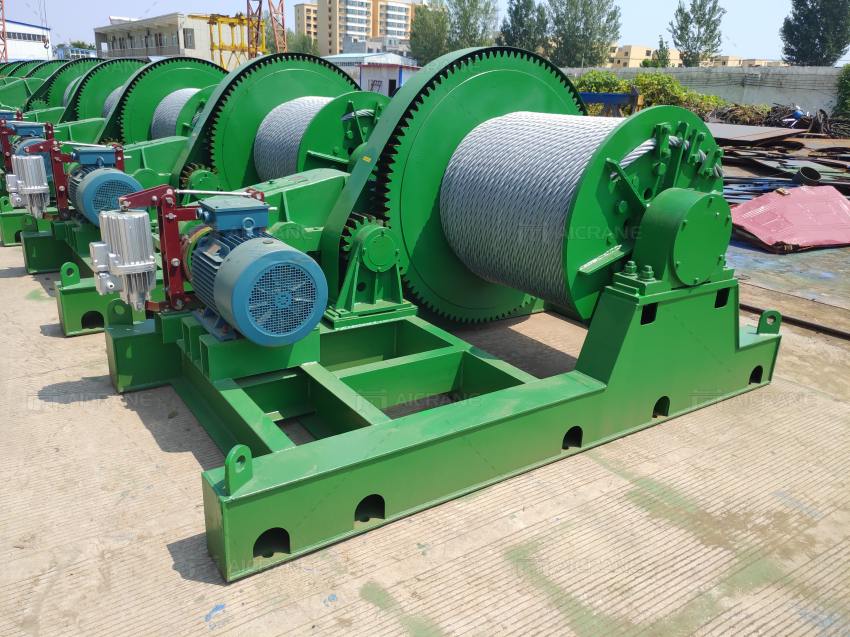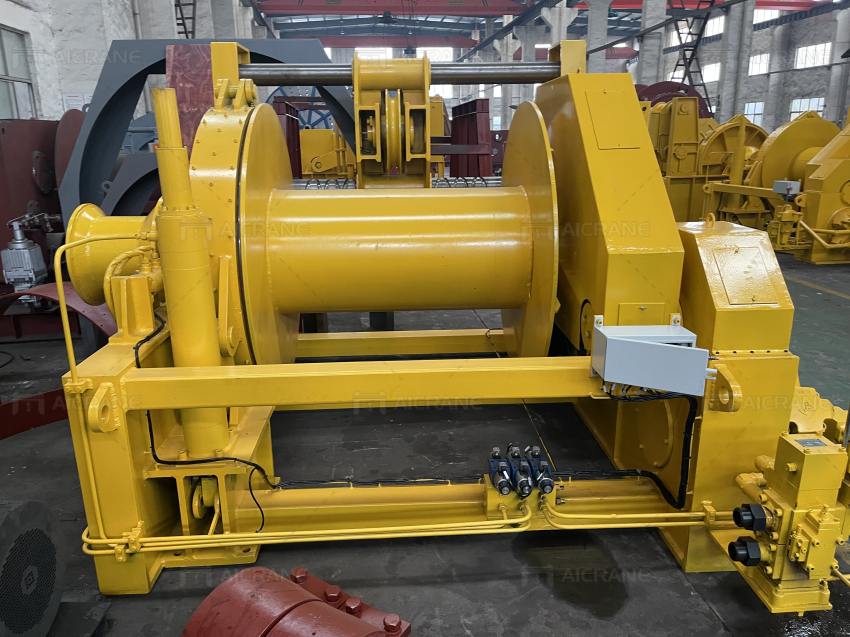A 30-ton winch is a robust and reliable piece of equipment designed for heavy-duty lifting and pulling tasks. With its impressive load capacity, this winch is utilized in various industries such as construction, mining, oil and gas, and marine operations. In this article, we will delve into the basic introduction of a 30 ton winch, explore its smart features, emphasize safe operation practices, and discuss the importance of regular maintenance.
A 30 ton winch is a powerful device specifically engineered to handle substantial loads. It comprises a heavy-duty frame, a high-capacity drum, and a strong wire rope or cable. This 30 ton winch is commonly powered by hydraulic systems or electric motors, ensuring smooth and controlled operation during lifting and pulling tasks.

Smart Features of 30 ton Winch
Modern 30 ton winches come equipped with several intelligent features that enhance performance, efficiency, and safety. Some notable smart features include:
Load Monitoring Systems: These systems provide real-time information about the load being lifted, ensuring that the winch operates within safe limits and preventing overloading.
Variable Speed Control: This feature allows operators to adjust the winching speed to suit different loads and working conditions, providing precise control during delicate operations.
Remote Control Operation: With remote control capabilities, operators can operate the winch from a safe distance, minimizing the risk of accidents and improving overall efficiency.
Synchronization Systems: Synchronization systems ensure coordinated movement when using multiple winches simultaneously. This feature is particularly useful in applications where precise alignment is required.

Safe Operation
Operating a 30-ton winch safely is paramount to protect personnel, equipment, and the surrounding environment. Here are some important safety considerations:
Adequate Training: Only trained and authorized personnel should operate the winch. Proper training ensures they understand the equipment, its limitations, and safe operating procedures.
Pre-Operational Inspections: Before each use, conduct thorough inspections of the winch, including wire ropes, hooks, controls, and safety devices, to identify any signs of damage or wear that could compromise safety.
Load Capacity: Never exceed the winch’s specified load capacity. Always verify the weight of the load and ensure it falls within the safe operating range.
Rigging and Anchoring: Properly rig and secure the load to prevent slippage or instability during lifting or pulling. Utilize appropriate attachments and ensure proper anchoring of the winch to a stable structure. Different winches can be used for different operations, for example, constructions winches used for construction sites and marine winches are usually used for anchoring, mooring and towing applications.
Personal Protective Equipment (PPE): Operators and personnel in the vicinity should wear appropriate PPE, such as helmets, gloves, safety glasses, and steel-toed boots, to protect against potential hazards.
Winch Regular Maintenance
Regular maintenance is essential to keep the 30-ton winch in optimal working condition and extend its service life. Here are some key maintenance practices:
Lubrication: Proper lubrication of moving parts, such as the winch drum, bearings, and gears, is vital to minimize friction and ensure smooth operation. Follow the manufacturer’s guidelines for lubrication intervals and use the recommended lubricants.
Inspection and Replacement: Regularly inspect wire ropes, cables, hooks, and other critical components for signs of wear, corrosion, or damage. Replace any worn or damaged parts promptly to prevent potential accidents or equipment failure.
Electrical and Hydraulic Systems: Inspect electrical connections, wiring, and hydraulic hoses for any signs of damage or leaks. Repair or replace damaged components and ensure all systems are functioning properly. According to different power modes, there are mainly electric winches and hydraulic winches for choices.
Control Systems: Test the winch’s control systems, including switches, buttons, and remote control functions, to ensure they are functioning correctly. Replace any faulty components and calibrate the controls as necessary.
Documentation: Maintain detailed records of maintenance activities, including inspections, repairs, and replacements. This documentation aids in tracking the winch’s maintenance history and helps identify any recurring issues.
A 30-ton winch is a robust and reliable workhorse for heavy-duty lifting and pulling applications. Its smart features enhance performance and safety, allowing operators precise control and remote operation. Safe operation practices, such as proper training, inspections, and adhering to load capacity limits, are essential to prevent accidents. Regular maintenance, including lubrication, inspections, and component replacements, ensures the winch operates reliably and extends its service life. By following these guidelines, operators can harness the full potential of a 30-ton winch while ensuring the safety of all involved in the operation. For more information of winch types and for a right choice, just click here now www.ellsencranes.com.